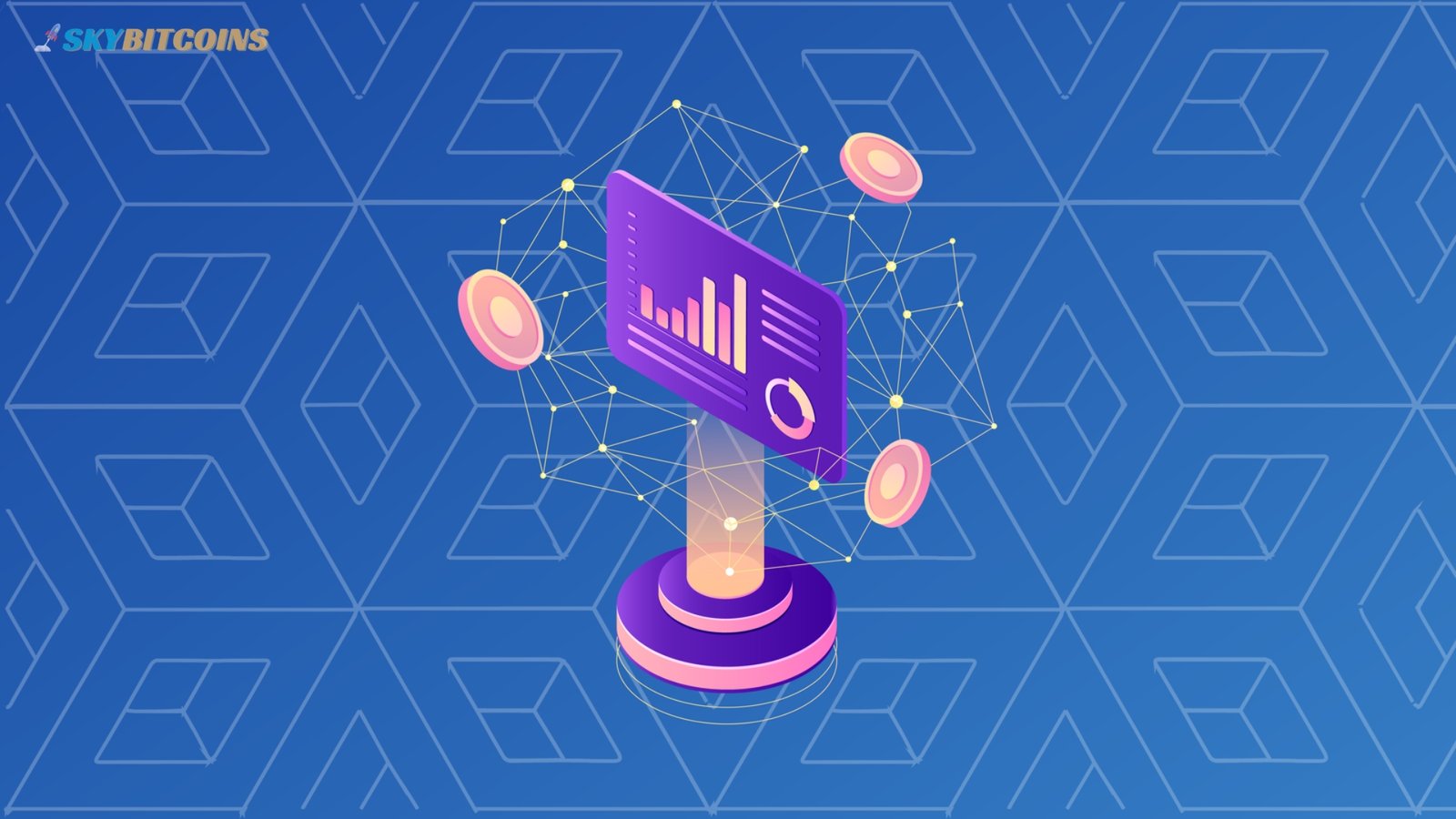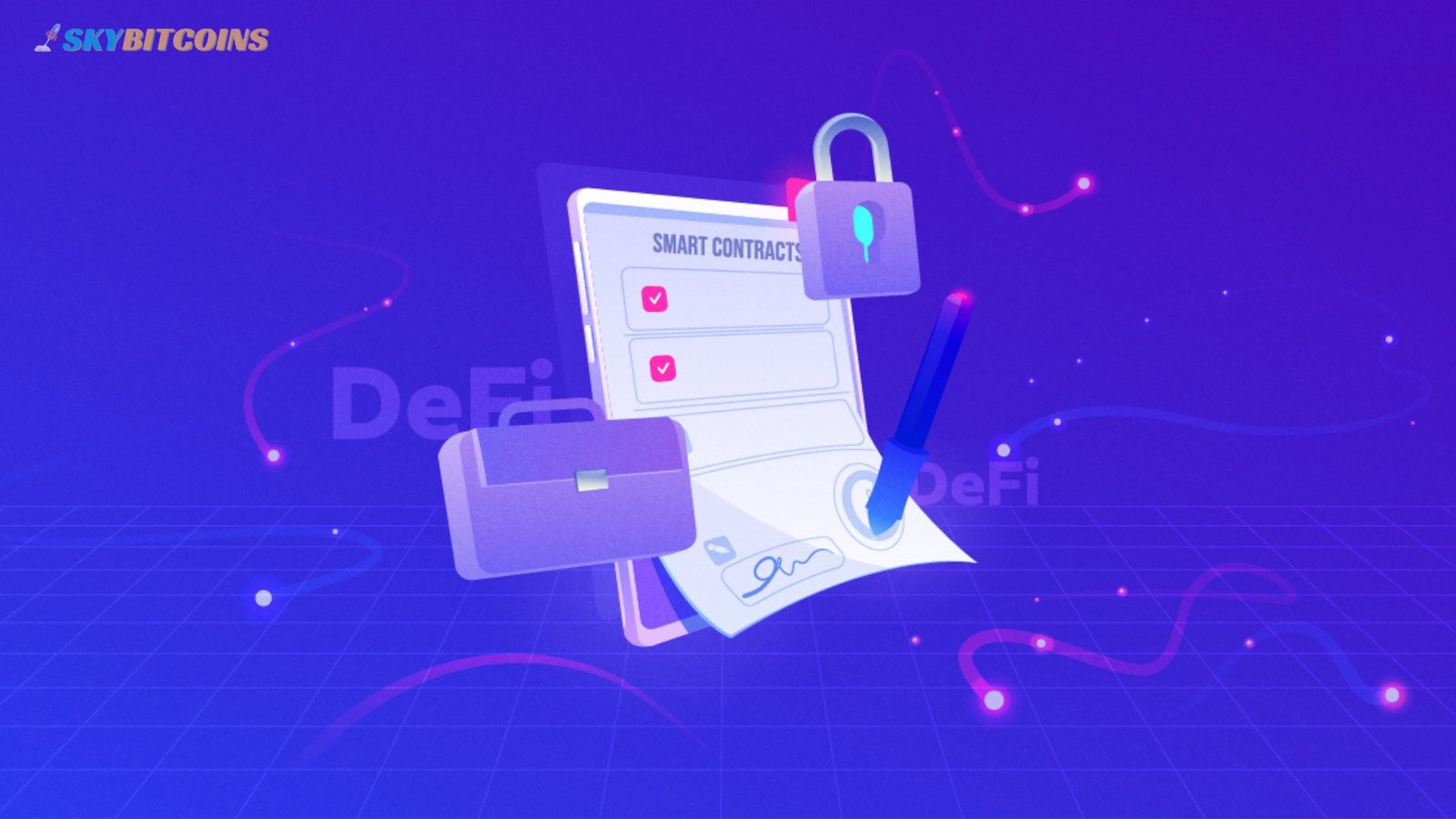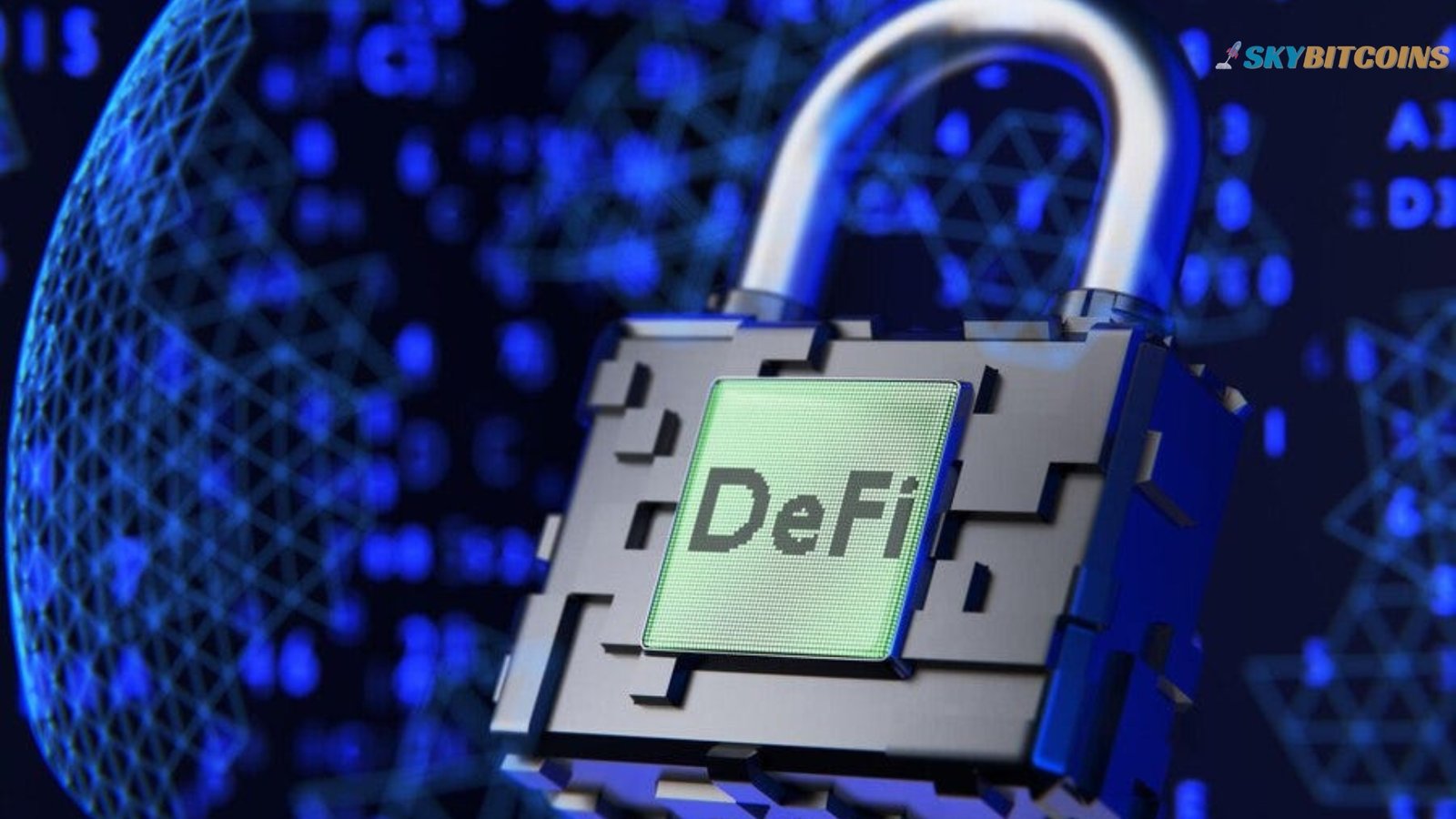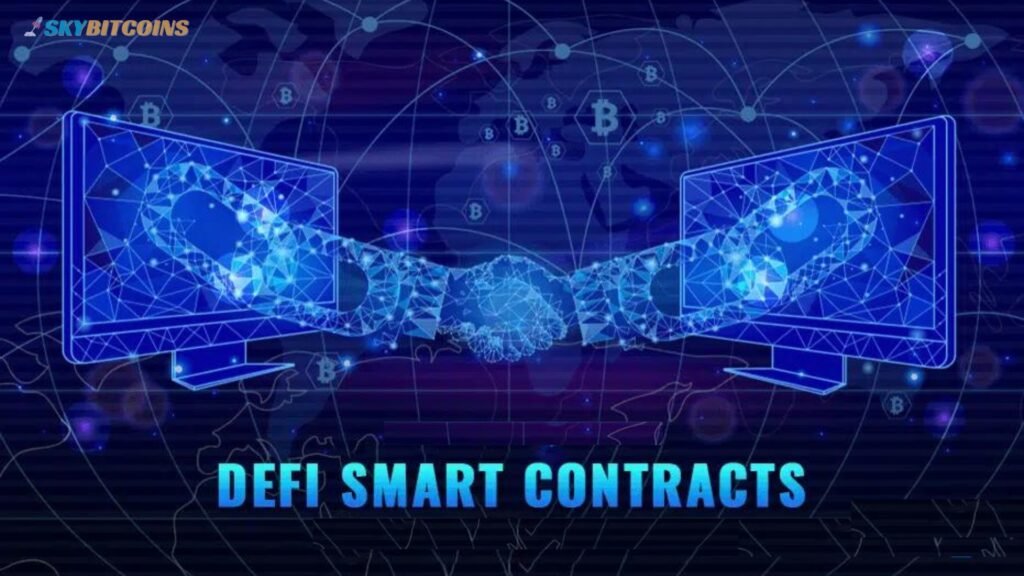DeFi Smart Contracts: Decentralized Finance, or DeFi, has emerged as one of the most transformative sectors in the blockchain and cryptocurrency space. At the heart of this revolution are smart contracts, self-executing contracts where the terms of the agreement are directly written into code. These smart contracts are pivotal in DeFi’s growth, enabling trustless financial transactions and services without the need for traditional intermediaries like banks or brokers.
What Are DeFi Smart Contracts?
A smart contract is essentially a program that runs on a blockchain. In the context of DeFi, these contracts automate the execution of financial transactions based on predefined rules without the need for a central authority or third-party mediator. For instance, a simple smart contract might automatically transfer funds from one account to another when specific conditions are met, such as service completion or deadline expiration.
DeFi smart contracts are deployed on decentralized networks like Ethereum, Binance Smart Chain, Solana, etc. They enable a wide array of financial services, including lending, borrowing, trading, and even insurance, to be decentralized. This decentralization gives DeFi its “trustless” nature, meaning that users do not need to trust a central authority to handle their funds but rather rely on the underlying code and the distributed network.
The Rise of DeFi: A Historical Perspective
The concept of smart contracts was first proposed by Nick Szabo in 1994, long before blockchain technology became mainstream. However, it wasn’t until the launch of Ethereum in 2015 that smart contracts found a practical and scalable platform. Ethereum’s introduction of a Turing-complete virtual machine allowed developers to create and deploy complex smart contracts that could handle various tasks.
The DeFi movement began gaining significant traction around 2017-2018, with projects like MakerDAO, Compound, and Uniswap leading the way. These projects showcased the potential of DeFi smart contracts to revolutionize financial services. MakerDAO, for example, introduced a decentralized stablecoin (DAI) governed by smart contracts, while Compound allowed users to lend and borrow cryptocurrencies without a central authority.
The DeFi boom of 2020, often referred to as “DeFi Summer,” marked a significant turning point. During this period, the total value locked (TVL) in DeFi protocols surged from around $1 billion to over $10 billion in months. This rapid growth was fueled by innovative smart contracts that enabled yield farming, liquidity mining, and decentralized exchanges (DEXs) to flourish.
How DeFi Smart Contracts Work
DeFi smart contracts function at their core by executing code when certain conditions are met. For example, in a decentralized lending platform, a smart contract might automatically release collateral to a lender if a borrower fails to repay a loan on time. These contracts are stored and executed on a blockchain, making them immutable and transparent. This means that once a smart contract is deployed, it cannot be altered, and its execution can be publicly verified.
Key components of DeFi smart contracts include:
- Oracles: These are third-party services that provide smart contracts with external data, such as the current price of an asset. Oracles are crucial for the functioning of DeFi applications, as they allow smart contracts to interact with real-world data.
- Automated Market Makers (AMMs): These algorithms set asset prices in decentralized exchanges. AMMs are smart contracts enabling users to trade tokens directly from their wallets without needing an order book or a central intermediary.
- Yield Farming: This process is where users earn rewards by providing liquidity to DeFi protocols. Smart contracts manage the distribution of these rewards, often in the form of governance tokens, which can be traded or used to vote on protocol changes.
- Liquidity Pools: These are pools of tokens locked in a smart contract that facilitate trading on decentralized exchanges. Liquidity providers earn a portion of the trading fees generated by the pool, incentivized by smart contracts.
Security and Risks of DeFi Smart Contracts
While DeFi smart contracts offer numerous benefits but also have significant risks, the immutability of smart contracts means that any vulnerabilities or bugs in the code cannot be easily fixed once the contract is deployed. This has led to several high-profile hacks and exploits in the DeFi space, resulting in the loss of millions of dollars.
Some of the primary risks associated with DeFi smart contracts include:
- Coding Errors: Even minor mistakes in the code can be exploited by malicious actors. For example, the infamous DAO hack in 2016, where $50 million worth of Ether was stolen, was due to a vulnerability in the smart contract code.
- Oracle Manipulation: Since smart contracts rely on oracles for external data, manipulating the data feed can result in significant losses. For instance, if an oracle provides a false price for an asset, it can trigger unintended actions in a smart contract.
- Economic Exploits: DeFi protocols can be vulnerable to economic attacks, where attackers manipulate the market or exploit the protocol’s economic model to drain funds. The flash loan attacks on platforms like bZx and Harvest Finance are examples of such exploits.
- Regulatory Risks: DeFi will likely attract increased scrutiny from regulators as it grows. However, The decentralized nature of DeFi makes it challenging to enforce traditional financial regulations, which could lead to legal uncertainties for users and developers.
The Future of DeFi Smart Contracts
The future of DeFi smart contracts looks promising, with ongoing developments aimed at improving security, scalability, and user experience. Some of the key trends and innovations to watch include:
- Layer 2 Solutions: Layer 2 solutions like Optimistic Rollups and zk-Rollups are being developed to address the scalability issues of current blockchains. These solutions allow smart contracts to be executed off-chain while still being secured by the underlying blockchain, reducing costs and increasing throughput.
- Cross-Chain Interoperability: As the DeFi ecosystem expands, there is a growing need for interoperability between blockchains. Projects like Polkadot and Cosmos are working on enabling cross-chain communication, which would allow DeFi smart contracts to interact across different networks.
- Improved Security Audits: With the increasing complexity of DeFi smart contracts, the demand for thorough security audits is rising. More sophisticated auditing tools and techniques are being developed to identify potential vulnerabilities before deployment.
- Decentralized Governance: Many DeFi protocols are moving towards decentralized governance models, where the community of token holders can vote on protocol upgrades and changes. Smart contracts play a crucial role in implementing these governance decisions transparently and trustless.
- Integration with Traditional Finance: As DeFi matures, there is potential for greater integration with traditional financial systems. This could involve bridging the gap between DeFi and CeFi (centralized finance), enabling seamless movement of assets between the two worlds.
Conclusion
DeFi smart contracts have revolutionized financial transactions, offering a decentralized, transparent, and efficient alternative to traditional financial systems. While the technology is still in its early stages and comes with significant risks, the potential benefits are enormous. As the DeFi space continues to evolve, we can expect to see even more innovative applications of smart contracts, further transforming the financial landscape. Whether it’s enabling peer-to-peer lending, creating new forms of digital assets, or democratizing access to financial services, DeFi smart contracts are set to play a central role in the future of finance.

